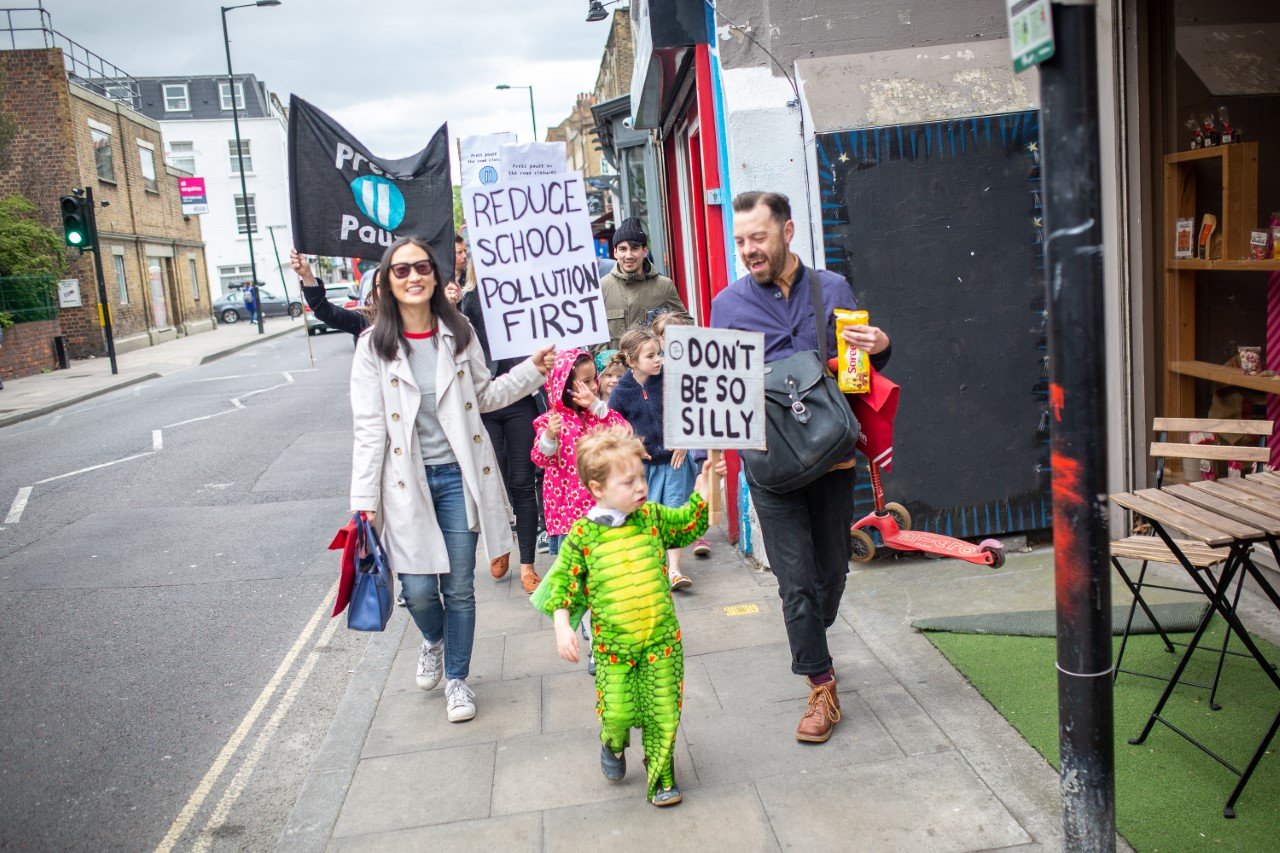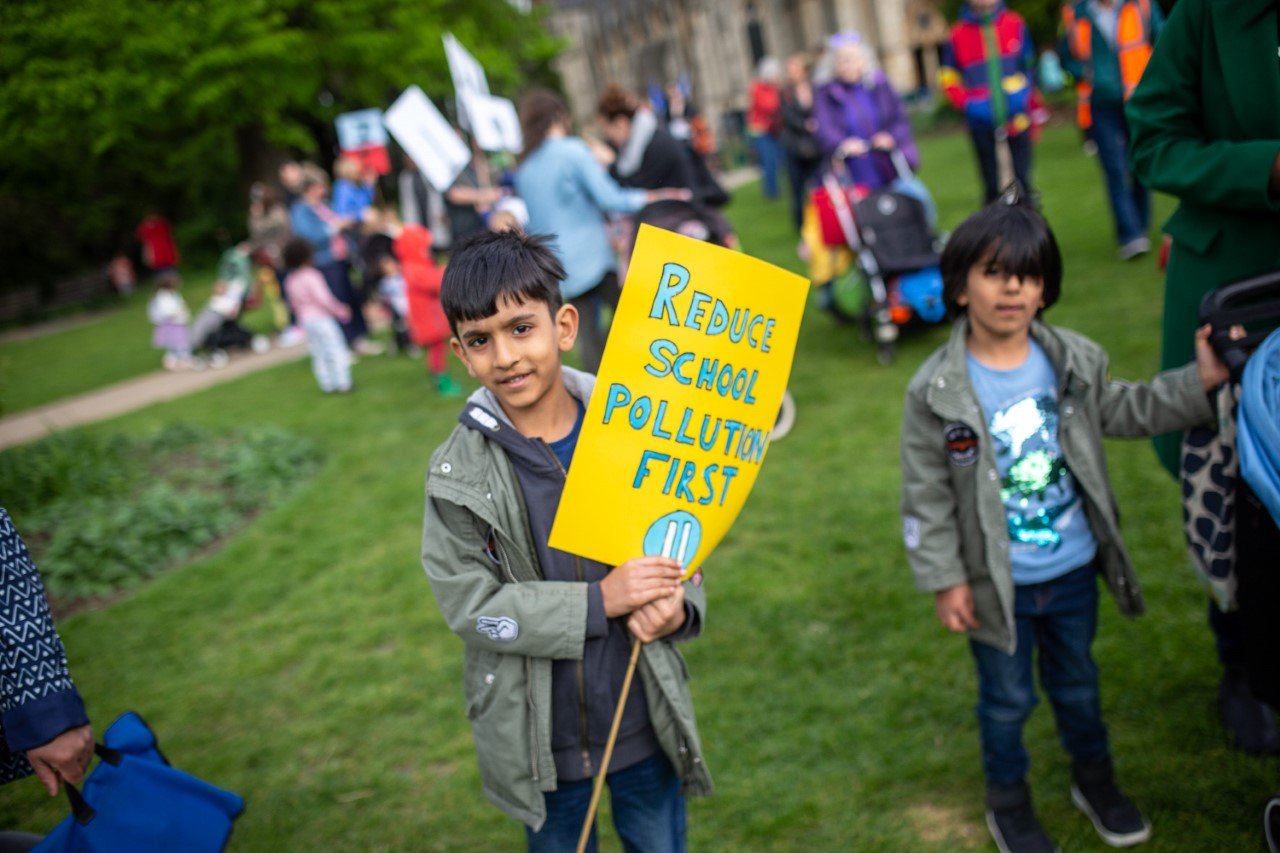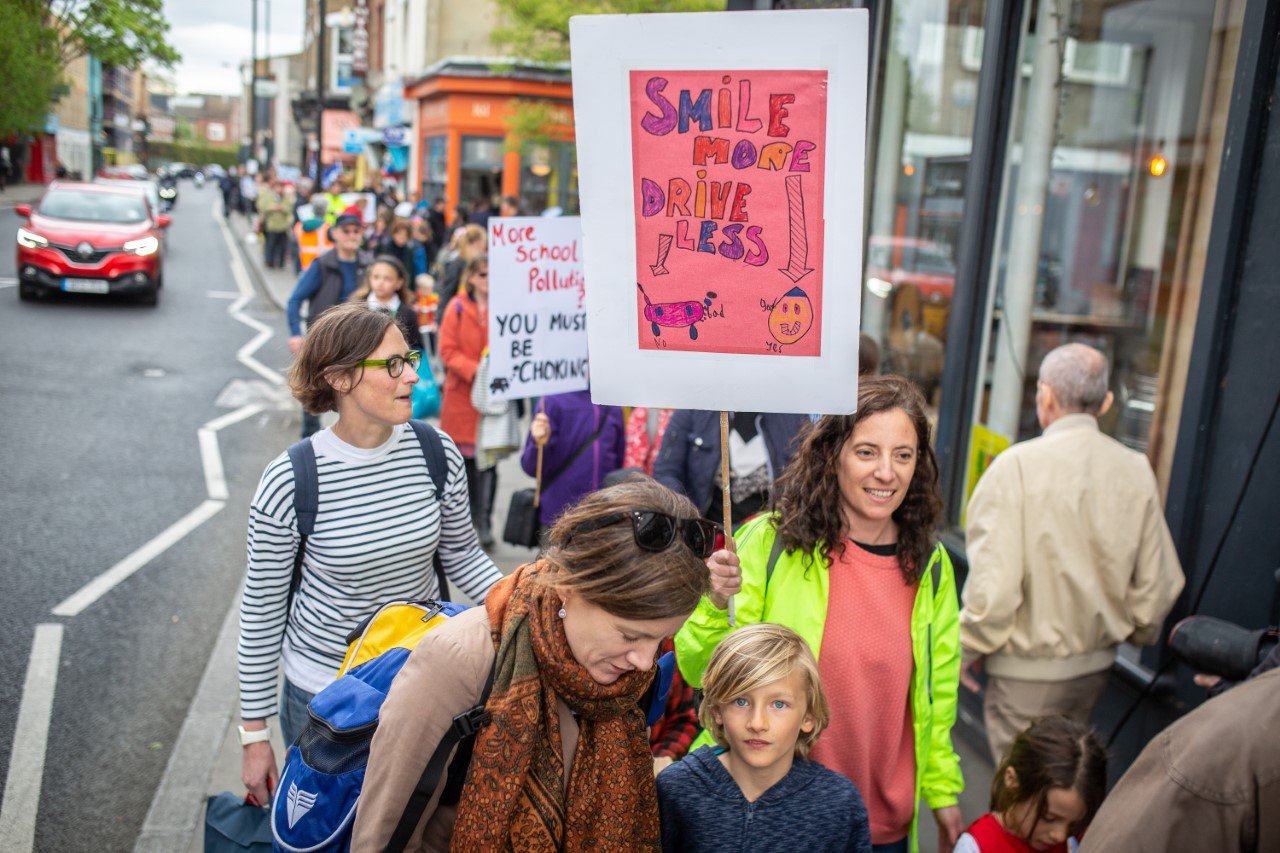William Patten Primary’s Story
Photo by Jamie Smith
William Patten Primary has a happy, successful, and creative community with a strong ethos. However, the school’s story is one we’ve heard before. It falls within the 98% of London’s primary and secondary state schools located in areas that exceed WHO air pollution guidelines. Parents and children are concerned about the existing air pollution, and the negative health impacts they are experiencing. The Mayor of London has pledged to improve the air young Londoners are breathing, and part of that pledge included the installation of 135 new Breathe London sensors to expand the city’s air pollution monitoring capabilities. The pathway towards lasting change is paved with the actions of passionate community members who are harnessing air quality data to effect change in the spaces where they live, breathe, work and play.
Taking strides to raise awareness and make meaningful air pollution reductions has [been] a long challenge for members of CleanAir4Schools, but their tremendous efforts are being recognised. We spoke with Sally Newsom to learn about how the data from the Breathe London sensor placed in the William Patten School playground has supported goals of improving air quality around where their children play, learn and grow.
Some of the group’s major achievements include:
Increasing awareness within the community and among those in power about ‘playground pollution’ at schools, and nurseries, especially from main roads.
Increasing awareness about the impacts of air pollution on child health
Galvanising support from residents, parents, the pupils themselves and heads of school calling for school air quality to be prioritised by schools and the Council .
Advising people on how to reduce their exposure at home, on the way to school, and through other daily habits.
Implementation of the first major schools-focused road traffic scheme on a ‘main road’ by Hackney Council.
Finding practical solutions: fundraising and implementation for a school green screen to absorb and block out some of the main road pollution; pioneering the very first low-pollution walking route maps for kids, by kids, for getting to school.
Lobbying the Council to apply the stricter annual mean pollution limit to the playground (rather than the less stringent hourly mean), which the council had been using prior.
Receiving press attention and being able to quickly share screenshots of air pollution data trends from the Breathe London platform.
Photos by Jamie Smith
Newsom shared that the data from Breathe London has been essential to “clarifying our school’s status as an illegally polluted school and pushing for action to clean up the air.” There have been instances, she noted, when the group’s concerns were downplayed due to a lack of data: “Breathe London data helped change this - it gave us accessible and robust evidence to support our position when talking to those in power. Before Breathe London installed the sensor, reliable air monitoring data was hard to obtain”. CleanAir4Schools plan to use the Breathe London data to continue their campaign to remove the bus stop and idling buses outside the playground at William Patten. The benefits in terms of child health and reduced economic burden have been clearly established (UK HSA, 2018).
Clean Air 4 Schools saw that children’s’ voices were excluded in all this. Newsom spoke about how, alongside the school they are proudly carving out space for children to share their voices. “How do we ensure that vulnerable community members who don't always have a voice are not lost in those decisions? You know, one of the important things for us is I think we gave children a voice… Through what we do, they [children] got to protest, they got to learn how to write to politicians and respond to consultations, they got to deliver leaflets, participate in art projects, and make low pollution walking maps. Children learnt that they can have a say, and they can have a voice.” An unprecedented 500 local children and parents made their voices heard by marching for Clean Air for Schools; William Patten families were guest speakers at the Unicef Air Quality Rally in Hyde Park and the group took their pleas for cleaner air at schools all the way to Parliament.
Without clear legal avenues to reduce air pollution around schools across London, the William Patten school community has creatively approached the challenge of having their voices heard and increasing awareness about local air pollution. One unique way that CleanAir4Schools and William Patten School are doing this, is with the help of artist Jan Cullen. Cullen launched the Young Lungs Sound Project two years ago, which gives ‘voice to the thoughts, anxieties, hopes and solutions’ of the children who attend the school. You can listen to them here.
Newsom concluded with: "Pollution might seem invisible, but the impacts are very real – they’re life-threatening and life-limiting, particularly for young children whose lungs are still developing. Knowing this, we call on government, local authorities and TfL to do everything possible to reduce pollution at schools, especially where children are already breathing in dirty air. Children have a right to a safe place to learn. The William Patten story isn’t over.”
The William Patten story is an inspirational example of how air pollution data can be harnessed to improve air quality. The Breathe London network continues to support communities across London like William Patten School with reliable air quality data to help raise awareness about pollution and protect human and environmental health.
To learn more about the William Patten Primary story & Clean Air For Schools, visit: https://www.williampatten.hackney.sch.uk/parents/air-pollution-information/ & https://www.facebook.com/cleanairforwp/




